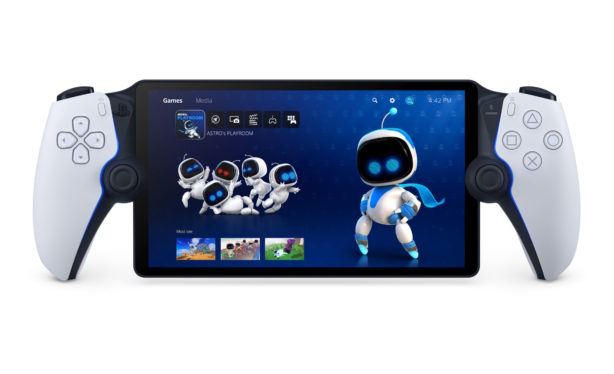Sony has twice tested the waters in portable gaming, with the unsuccessful but fondly remembered PSP and Vita. Third time lucky is the hope with PlayStation Portal, a handheld gaming device that — there’s no getting around it — is more or less a supercharged version of Nintendo’s endearingly confusing Wii U.
Teased in May, the Portal is essentially a PS5 controller (touchpad, haptics and all) split down the middle with an 8-inch, 1080p LCD. It plays any game your PS5 has at 60 FPS by streaming the image over wi-fi, though already-streaming games via PS Now and VR ones are not supported. And of course you can’t play on the train or a long flight.
As with the Wii U, the idea is that if someone else is using the TV, or if you want to play in the bedroom or kitchen for whatever reason. Though unlike the Wii U, there is no suggestion of asymmetric multiplayer or using the Portal as a special controller in gameplay.
Nintendo fumbled the Wii U in countless ways, so the concept has an air of pointlessness about it. And while for some this use case may not hit, don’t underestimate the number of households where kids or parents dominate the TV. Your friends want to raid but mom is watching the game, or the kids are watching Frozen 2 for the 9th time today and dad needs to do some inventory management in Horizon: Zero Dawn.
Of course there are numerous ways to do this already via existing apps and hardware, but the hope is that the draw of a first-party device will draw people in who want the minimum of fuss on this platform specifically.
At $200, it’s a bit expensive for an accessory, but if it performs as they describe it in their own (doubtless totally objective) hands-on report, it might be a great option for a fair amount of people to have available. We’ll have to try it in person to see if the image quality and latency are as good as they claim.

Image Credits: Sony
Obviously itching to show off some new wireless tech they developed, Sony also announced two new pairs of headphones: one over-ear pair (Pulse Elite, $150) that looks like direct upgrade to the Pulse 3D headset, and some in-ear buds called Pulse Explore ($200).
Both feature “custom-designed planar magnetic drivers for an audiophile-level listening experience normally found in premium headphones for professional sound engineers.” Sony makes a lot of cans, so they know of what they speak. I was disappointed with the Pulse 3D headset that came with the PS5, though, so hopefully these are an upgrade.
Each comes with a new “PlayStation Link” USB dongle that can quickly switch between associated devices: currently these two pairs plus the Portal use this connection method.





